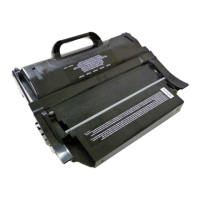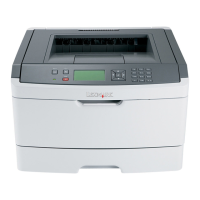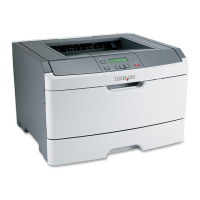PCL
2-82
Table 2-27: Font Creation
Command / Parameters Function / Result
ESC
*c#D
# = Font ID # (0 - 32767)
Default = 0
Set Font ID
Sets the identification number for the font being downloaded.
ESC
)s#W[data]
# = number of data bytes
Load Font Header
Downloads soft font header information.
Note: Set Font ID before using this command.
ESC
*c#F
0 Delete all (temporary and permanent)
1 Delete all temporary
2 Delete previous font ID
3 Delete previous specified character
4 Make previous font ID temporary
5 Make previous font ID permanent
6 Copy current font
Caution: Font Control
Manages soft fonts.
ESC
*c#E
# = Code Point (0 - 65536)
Default = 0
Set Character Code
Sets the decimal code point associated with the next character
downloaded or deleted.
ESC
(s#W[data]
# = number of data bytes
Load Character
Downloads character descriptor and data to the current character
code.
Table 2-28: Macros
Command / Parameters Function / Result
ESC
&f#Y
# = Macro ID (0 - 32767)
Default = 0
Set Macro ID
Sets the ID for the macro you have created on flash or disk.
ESC
&f#X
0 Start definition
1 End definition
2 Execute macro (previous macro ID)
3 Call macro (previous macro ID)
4 Enable overlay (previous macro ID)
5 Disable overlay
6 Delete all macros
7 Delete all temporary macros
8 Delete current macro ID
9 Make last ID temporary
10 Make last ID permanent
Macro Control
Manages use of macros.
Notes:
• GL/2 commands are supported inside macros.
• Only call and execute macro commands are allowed within a macro.
• A macro may call or execute another macro. This is called nesting. A
maximum of two nesting levels are allowed, for a total of three
levels.
See “Macros” on page 2-104 for additional information.
